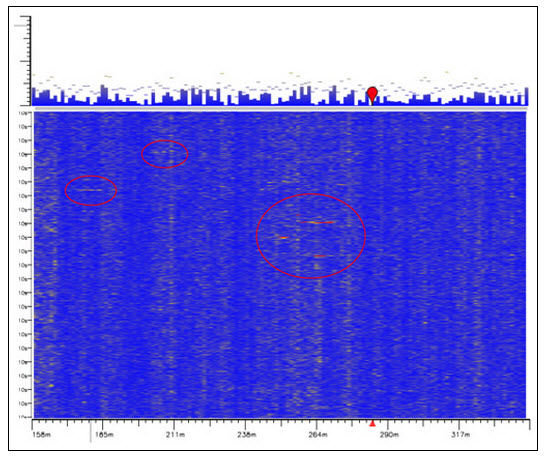Invisible underground border monitoring system could revolutionize how the U.S. conducts homeland security
December 15, 2010

Helios system output captured while a 35-pound dog ran across the buried fiber-optic cables. System threshholds can be set so that smaller animals do not trigger alarms.
The University of Arizona College of Engineering is testing an invisible border monitoring system that could revolutionize the way the U.S. conducts homeland security.
The border-monitoring system, known as Helios, consists of laser pulses transmitted through fiber-optic cables buried in the ground that respond to movements on the surface above. A detector at one or both ends of the cable analyzes these responses.
Helios is sensitive enough to detect a dog and can discriminate between people, horses and trucks. The system can be set to avoid being triggered by small animals, and can also tell if people are running or walking, or digging, and in which direction. The location of a cut cable, or people, or vehicles, can be pinpointed instantly to within one meter along a section of cable up to 50 kilometers long.
The Helios system consists of fiber-optic cables, lasers and detectors, and is more accurately described as a “distributed acoustic sensor.” It relies on the physics phenomenon of “optical backscattering” for its operation, and is made by British company Fotech Solutions.
These 50-kilometer cable lengths, each with a Helios detector, can be strung together indefinitely to cover vast distances. For example, the border between the United States and Mexico is 1,969 miles, or 3,169 kilometers. Although the extreme topography of some border areas would make cable deployment difficult, dividing the border length into 50-kilometer segments equates to approximately 64 cable sections and detector units equates to approximately 64 cable sections and detector units.
Adapted from materials provided by The University of Arizona